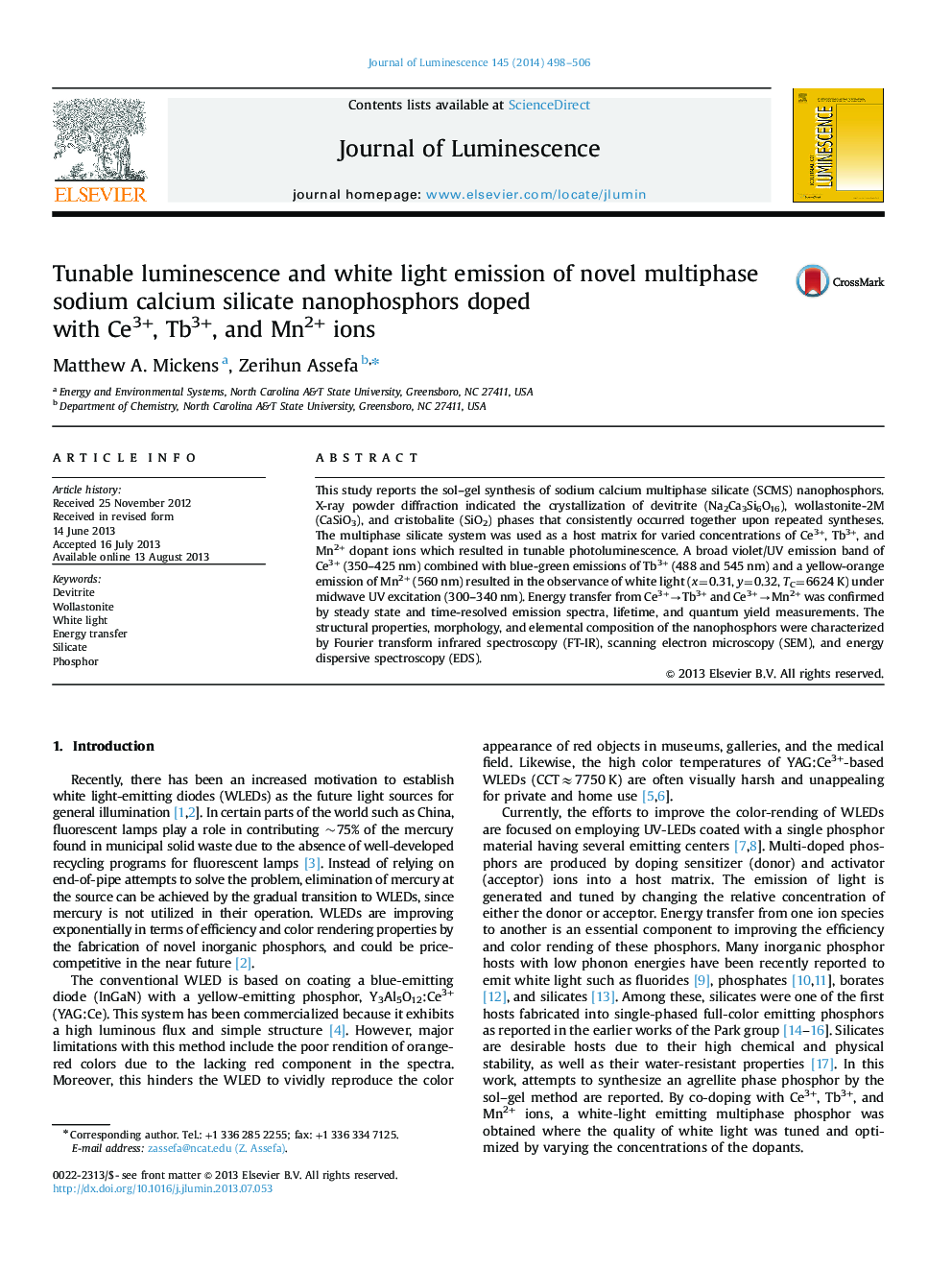| Article ID | Journal | Published Year | Pages | File Type |
|---|---|---|---|---|
| 5400208 | Journal of Luminescence | 2014 | 9 Pages |
Abstract
This study reports the sol-gel synthesis of sodium calcium multiphase silicate (SCMS) nanophosphors. X-ray powder diffraction indicated the crystallization of devitrite (Na2Ca3Si6O16), wollastonite-2M (CaSiO3), and cristobalite (SiO2) phases that consistently occurred together upon repeated syntheses. The multiphase silicate system was used as a host matrix for varied concentrations of Ce3+, Tb3+, and Mn2+ dopant ions which resulted in tunable photoluminescence. A broad violet/UV emission band of Ce3+ (350-425Â nm) combined with blue-green emissions of Tb3+ (488 and 545Â nm) and a yellow-orange emission of Mn2+ (560Â nm) resulted in the observance of white light (x=0.31, y=0.32, TC=6624Â K) under midwave UV excitation (300-340Â nm). Energy transfer from Ce3+âTb3+ and Ce3+âMn2+ was confirmed by steady state and time-resolved emission spectra, lifetime, and quantum yield measurements. The structural properties, morphology, and elemental composition of the nanophosphors were characterized by Fourier transform infrared spectroscopy (FT-IR), scanning electron microscopy (SEM), and energy dispersive spectroscopy (EDS).
Related Topics
Physical Sciences and Engineering
Chemistry
Physical and Theoretical Chemistry
Authors
Matthew A. Mickens, Zerihun Assefa,
